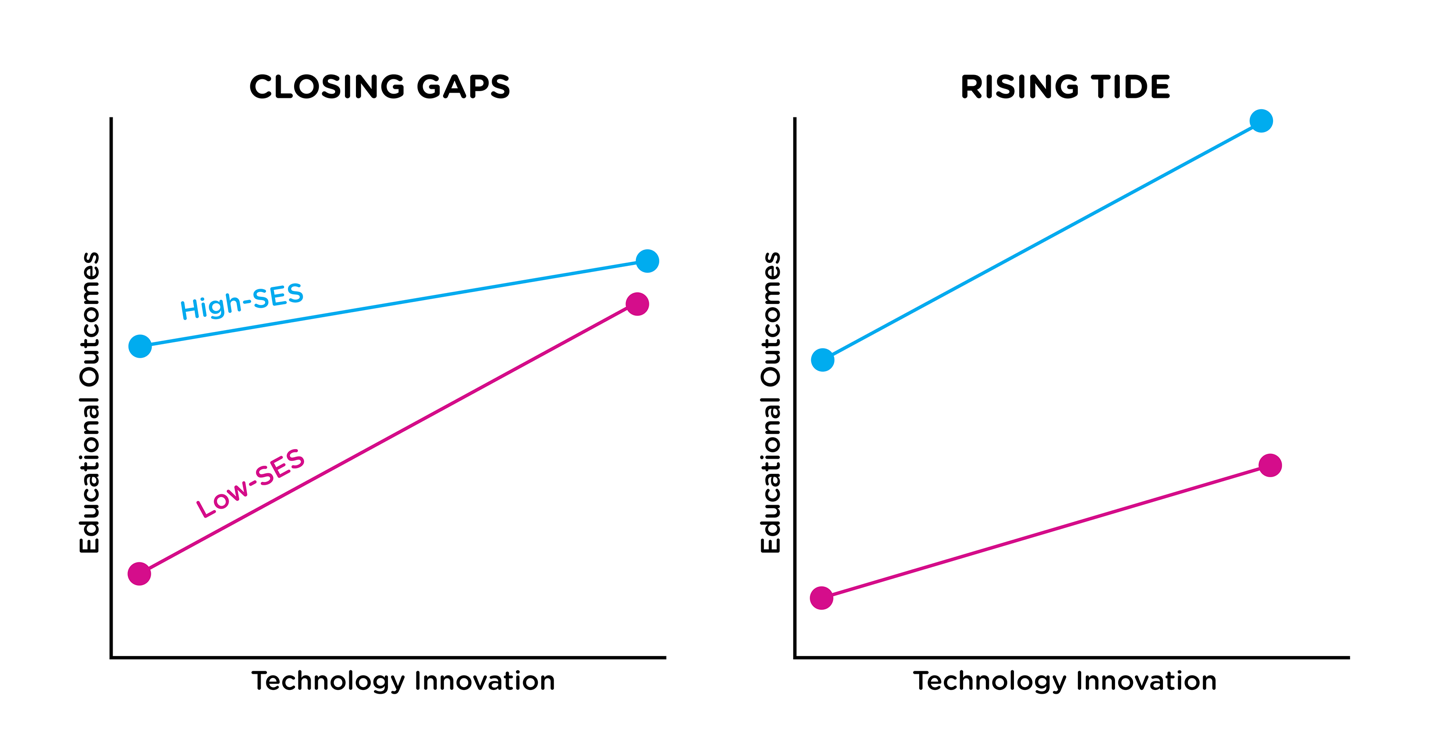In 2017, reality took a massive swipe at the wobbly optimism of technology progressives. Echoing wider soul searching over technology’s polarizing role in politics and society, the education technology scene has been doing its own reckoning.
As the bubbly enthusiasm in the democratizing power of platforms like Massive Open Online Courses (MOOCs) and Khan Academy quietly wanes, we’ve seen more attention to digital inequity like the homework gap and gender discrimination in coding careers.
Concerned that current technologies may not be closing equity gaps, a group of educators, researchers, developers and funders gathered over the course of this past year to consider how we might do better. Here’s some of what we learned about the challenges and opportunities in mobilizing new technologies to address educational equity.
A Rising Tide of Inequality
Edtech efforts at broadening access to opportunity often falter when running up against entrenched forms of inequity and discrimination. As an anthropologist and learning scientist who has studied many edtech movements over the years, I recognize a familiar pattern of technology-fueled optimism being squashed by entrenched social and cultural structures. Innovators tend to over-estimate how disruptive technology can be on its own, and under-estimate how resilient educational institutions are to fundamental change.
Justin Reich, Executive Director of the MIT Teaching Systems Lab, and I summarized this existing evidence in our report that resulted from the series of meetings this past year, “From Good Intentions to Real Outcomes: Equity by Design in Learning Technologies.”
Here are a few causes for concern that we highlighted:
Same Technology, Unequal Schools: In his dissertation at UC Irvine, Matt Rafalow studied three high schools in Southern California serving different populations of students. He found that only the school serving elite students embraced the more creative and personally empowering use of technology. This was despite the fact that all three schools had the same levels of technology access.
Open ≠ Equitable: An analysis by John Hansen and Justin Reich of U.S. census data in relation to free EdX courses at Harvard and MIT showed that those who take these courses are more affluent and educated than typical Americans.
Social and Cultural Forces Derail Good Intentions: A study by Vikki Katz and Carmen Gonzales of Connect2Compete, a broadband subsidy program, saw low uptake among the low-income families it was designed to serve because it didn’t take into account their local circumstances and concerns. For example, in contrast to those in other states, many immigrant families in Arizona feared state surveillance through school-issued laptops.
In other words, even efforts designed to promote equity can contribute to a widening gap. Hansen and Reich describe this as a “rising tide” scenario where edtech gives more advantage to those with higher socioeconomic status and greater access to education, technology, and economic resources.

Bright Spots That Rekindle Hope
Our report describes what we’ve learned from our failures, as well as promising equity-enhancing innovations and approaches.
Despite the sobering findings, 2017 offered some notable bright spots. Record numbers of youth from groups underrepresented in the technology profession took the AP computer science exam this past year, and Khan Academy SAT test prep programs are showing early promising results, potentially delivering on the intended goal of democratizing access to test prep. The CS4All movement is thriving, and the Scratch platform for creative coding marked its 10th anniversary with record numbers of students connecting from schools serving young people from all walks of life.
Here’s what the education community—of educators, entrepreneurs, funders, researchers and nonprofits—can do better:
Unite Around Shared Purpose: When initiatives are co-developed and co-facilitated with stakeholders, they are more likely to be better attuned to the social and cultural contexts of the populations they are meant to serve.
Align Home, School, and Community: While affluent students often have tech-savvy parents and the latest technology at home, less-resourced students can’t count on these supports. One fruitful strategy for reducing the gap is building the capacity of parents and mentors alongside that of children.
Connect to the Interests and Identities of Minority Children and Youth: Learning communities can be exclusionary when they reflect a dominant culture that is exclusionary to outsiders, but they can also be safe spaces for minority children and youth if they reflect their culture and identity.
Target the Needs of Subgroups: Rather than try to create a universal solution, programs that target the neediest groups can be effective at closing gaps. These can include strategies such as addressing stereotype threat, and addressing costs that matter more to low-income groups.
On their own, the products and services created by the edtech industry will not close the massive opportunity gaps that we face in the U.S. and globally. But, I do hope that 2018 will see a greater emphasis on coalition-building and renewed attention to how edtech can best contribute to this broader challenge.


